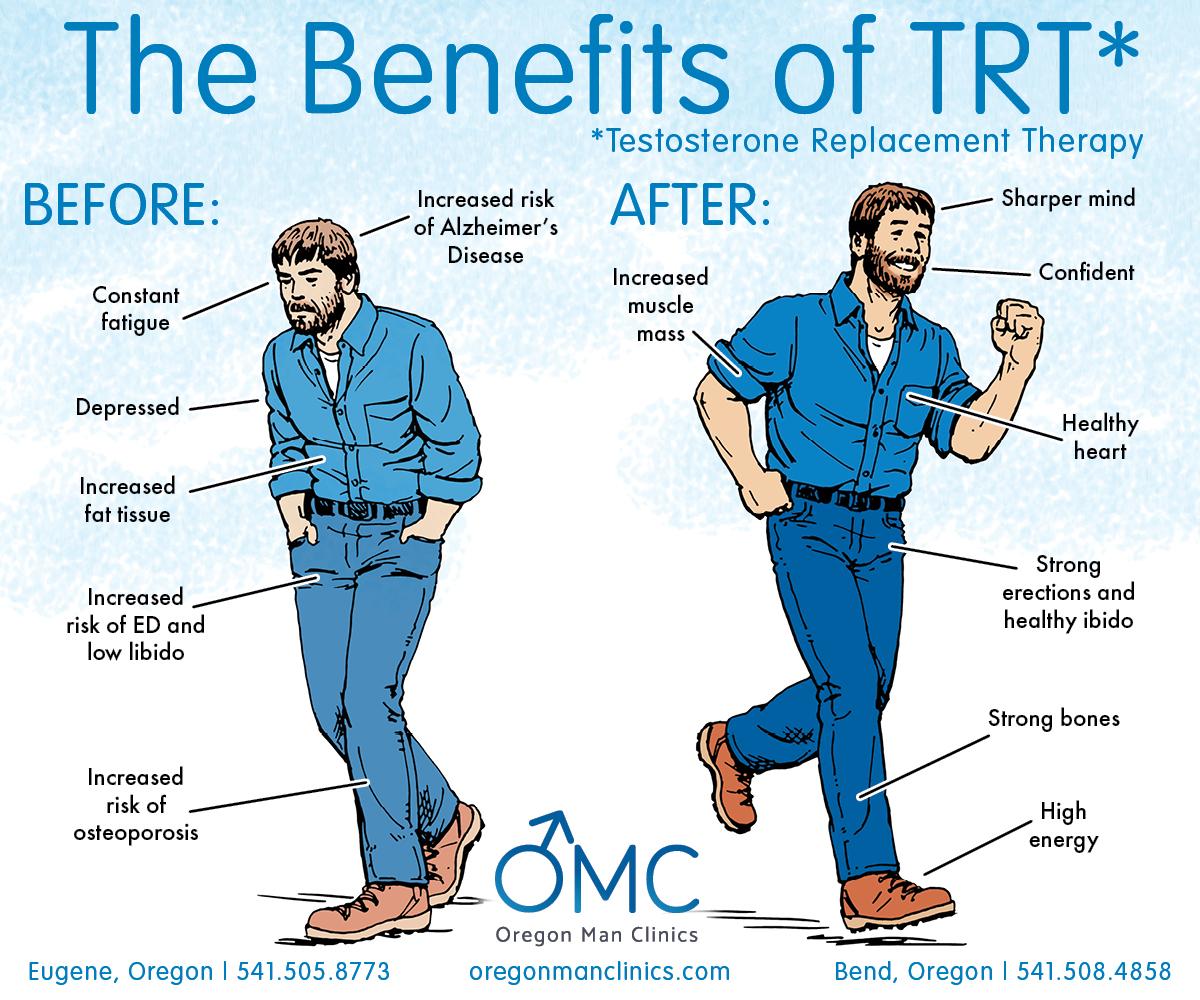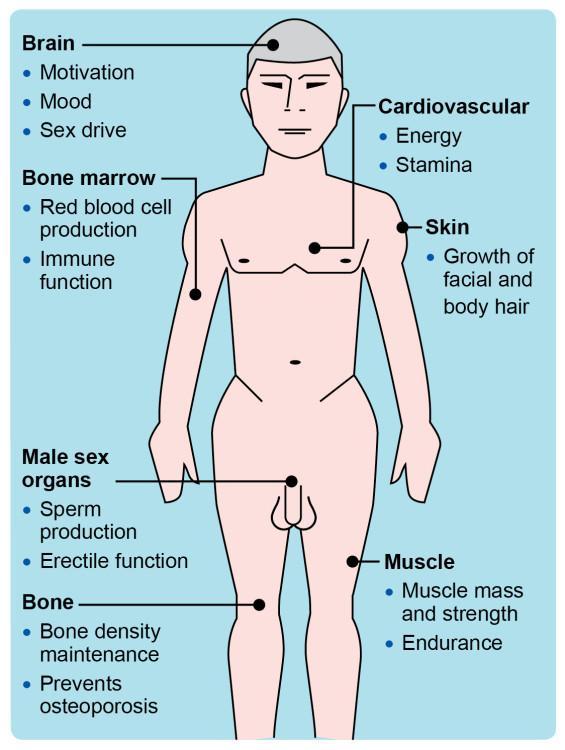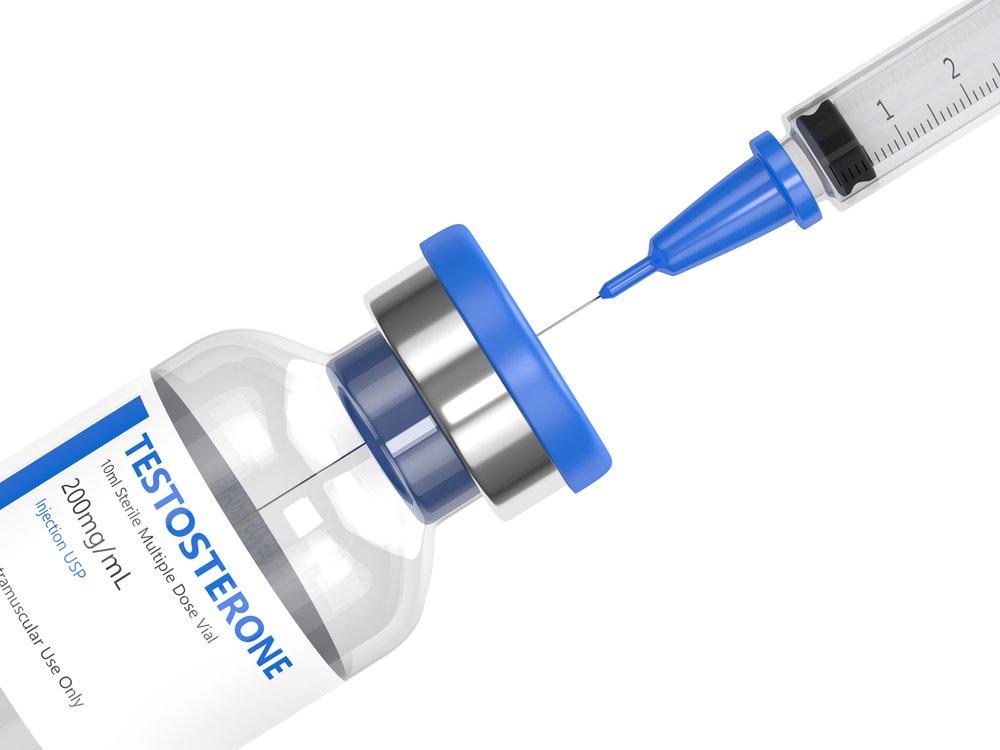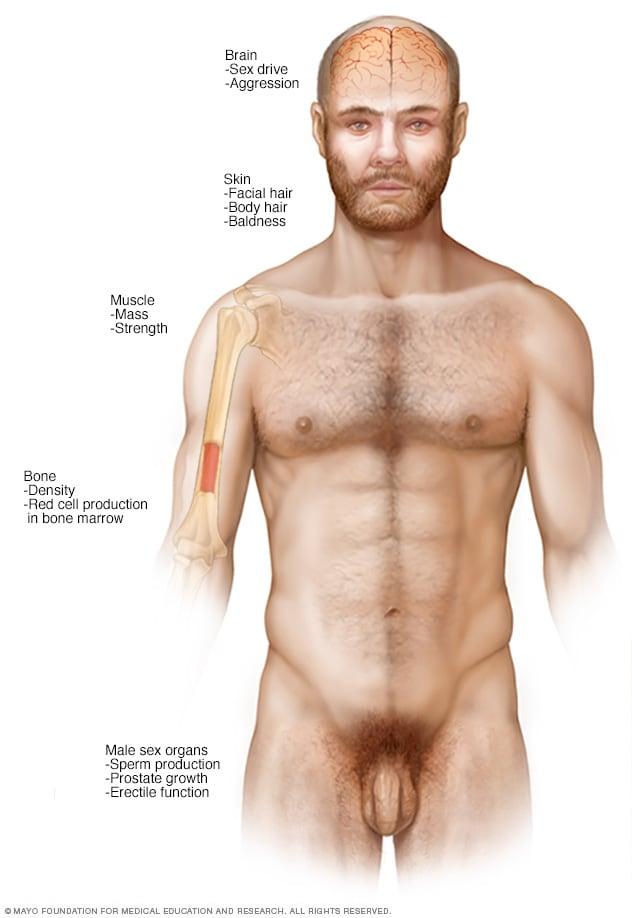In a world where the pursuit of optimal health often intertwines with the complexities of hormonal balance, testosterone therapy emerges as a compelling focal point. As we navigate the intricate landscape of physical wellness, the significance of this powerful hormone comes into sharper focus. Once relegated to discussions dominated by misconceptions and stereotypes, testosterone is now gaining recognition for its multifaceted role in men’s and women’s health alike. From enhancing physical strength and vitality to influencing mood and energy levels, the potential benefits of testosterone therapy are prompting an ever-growing conversation among health professionals and patients alike. In this article, we will delve into the science behind testosterone therapy, exploring its applications, efficacy, and potential risks, to offer a balanced perspective on how it can contribute to improved physical health. Join us as we uncover the nuances of this evolving treatment and its impact on overall well-being.
Understanding Testosterone and Its Role in Physical Health
Testosterone, often dubbed the “male hormone,” plays a crucial role not only in male development but in overall physical health for both genders. It is primarily produced in the testes in men and the ovaries and adrenal glands in women. Testosterone contributes to various bodily functions, such as:
- Muscle Mass and Strength: It promotes muscle growth and increases strength, which is essential for maintaining a healthy body composition.
- Bone Density: Testosterone helps in the maintenance of bone density, reducing the risk of osteoporosis.
- Fat Distribution: It influences how the body stores fat, impacting metabolic rates and overall energy levels.
- Red Blood Cell Production: This hormone stimulates the production of red blood cells, which is vital for transporting oxygen throughout the body.
Understanding the significance of testosterone extends beyond its physiological functions; it also has profound implications for mental well-being and quality of life. Low levels of testosterone can lead to mood swings, fatigue, and a decrease in libido, affecting both physical capabilities and emotional health. Treatment options for testosterone deficiency often include hormone replacement therapy (HRT), which can result in:
- Improved Mood: Many patients report enhanced mood stability and reduced anxiety.
- Increased Energy Levels: Restoring testosterone levels can alleviate symptoms of fatigue and boost energy.
- Enhanced Cognitive Function: Some studies suggest improved cognitive functions such as memory and focus.

Assessing the Need for Testosterone Therapy in Men and Women
Determining whether testosterone therapy is appropriate requires a comprehensive assessment of individual symptoms and health factors. Both men and women can experience hormonal imbalances that lead to a range of physical and emotional issues. Some common indicators that may signal a need for therapy include:
- Fatigue: Unexplained tiredness that persists despite adequate rest.
- Libido Changes: Significant declines in sexual desire or performance.
- Mood Alterations: Increased irritability, anxiety, or depressive symptoms.
- Muscle Weakness: Reduced strength or lean muscle mass.
- Bone Density Loss: Higher risk of fractures or osteoporosis.
Moreover, conducting a thorough medical examination can help in identifying underlying conditions that could contribute to low testosterone levels. Factors such as age, medical history, and lifestyle choices play a pivotal role in this assessment. To facilitate a deeper understanding, the following table summarizes common reasons for testosterone therapy consideration:
| Gender | Common Symptoms | Potential Benefits of Therapy |
|---|---|---|
| Men | Low mood, decreased muscle mass, fatigue | Enhanced mood, improved physical strength, increased libido |
| Women | Decreased libido, fatigue, mood swings | Improved energy levels, enhanced sexual function, mood stabilization |

Benefits of Testosterone Therapy for Muscle Mass and Strength
Testosterone therapy can play a pivotal role in enhancing muscle mass and strength, particularly for those experiencing deficiencies in this vital hormone. By artificially increasing testosterone levels, individuals may witness significant changes in their body composition. The therapy promotes muscle protein synthesis, which is crucial for muscle repair and growth. As a result, many users report improved strength and endurance during workouts, enabling them to push their physical limits further than before.
Furthermore, the benefits extend beyond mere muscle gain. Testosterone therapy is associated with several physiological improvements, including:
- Increased bone density: Stronger muscles contribute to better bone health.
- Enhanced recovery: Quicker recovery times between workouts lead to more effective training cycles.
- Improved energy levels: An increase in overall vitality supports more active lifestyles.
- Better mood and motivation: Higher testosterone can lead to improved mental clarity and a positive outlook.
| Factor | Impact |
|---|---|
| Muscle Mass | Significantly increases |
| Strength | Enhanced performance |
| Recovery Rate | Faster recuperation |

Exploring the Impact of Testosterone on Bone Density and Joint Health
Testosterone plays a crucial role in maintaining not just muscle mass and energy levels, but also in supporting bone density and joint health. Low testosterone levels have been linked to a decrease in bone mineral density, which can increase the risk of fractures and osteoporosis. Research indicates that testosterone therapy may enhance bone density by stimulating osteoblastic activity, which is vital for bone formation. This effect is particularly significant in men over the age of 50, who may experience natural declines in hormone levels. Some studies have shown that patients receiving testosterone therapy exhibit improvements in their spinal and hip bone density, leading to a reduced risk of fracture incidents.
Moreover, testosterone influences joint health significantly. Adequate levels of this hormone can contribute to the maintenance of cartilage integrity, reducing the likelihood of developing osteoarthritis. Patients undergoing testosterone therapy often report decreased joint pain and improved mobility, which can be attributed to enhanced muscle strength that further supports joint function. To better illustrate these effects, consider the following table summarizing the benefits of testosterone therapy related to bone and joint health:
| Benefit | Description |
|---|---|
| Increased Bone Density | Stimulates osteoblasts for stronger bones. |
| Reduced Fracture Risk | Enhances overall bone strength. |
| Improved Joint Function | Supports muscle strength, reducing joint stress. |
| Decreased Joint Pain | May alleviate discomfort associated with joint conditions. |
Risks and Considerations Associated with Testosterone Therapy
While testosterone therapy can offer significant benefits for physical health, it is crucial to remain aware of the potential risks and considerations associated with its use. Individuals undergoing this treatment may experience side effects such as acne, sleeplessness, and increased anxiety. Long-term use can also lead to more serious complications, including:
- Cardiovascular issues – Elevated blood pressure and increased risk of heart disease.
- Prostate health concerns - Potential growth of benign prostatic hyperplasia (BPH) or worsening of prostate cancer.
- Liver damage – Particularly with oral formulations of testosterone.
Furthermore, testosterone therapy might alter mood and behavioral patterns, leading to irritability and aggression, commonly referred to as ”roid rage.” Regular monitoring is essential to adjust dosages and assess side effects effectively. It’s recommended that patients maintain an open dialogue with healthcare providers to monitor:
| Health Parameter | Frequency of Monitoring |
|---|---|
| Testosterone Levels | Every 3-6 months |
| PSA Levels (Prostate-Specific Antigen) | Annually |
| Complete Blood Count | Every 6-12 months |
Ultimately, an individualized approach that considers the benefits and potential drawbacks of testosterone therapy is crucial for optimizing health outcomes while minimizing risks.
Monitoring and Adjusting Testosterone Levels for Optimal Health
Maintaining a balance in testosterone levels is crucial for overall well-being and physical vitality. Regular monitoring through blood tests can help identify fluctuations and ensure that levels remain within a healthy range. This process often involves working with healthcare professionals who specialize in hormone therapy. Key indicators to keep track of include:
- Total Testosterone – The overall amount of testosterone in the bloodstream.
- Free Testosterone – The portion of testosterone that is not bound to proteins and is available for use by the body.
- Estradiol Levels – As testosterone can convert to estrogen, monitoring estradiol is important to prevent unwanted effects.
- SHBG (Sex Hormone-Binding Globulin) – This protein can affect the availability of free testosterone.
Adjusting testosterone therapy is often necessary to achieve optimal results. Factors such as age, lifestyle, and existing health conditions can impact how the body responds to treatment. A personalized approach may include alterations in dosage or the frequency of administration. Considerable attention should be given to the following points:
| Adjustment Type | Consideration |
|---|---|
| Dosage Changes | Evaluate effectiveness and monitor side effects. |
| Administration Route | Explore injections, patches, or gels as needed. |
| Routine Follow-Up | Schedule regular check-ups to reassess hormone levels. |
Ultimately, the goal is to strike a balance that not only enhances physical capabilities but also supports mental and emotional health. Being proactive in monitoring and adjusting testosterone levels can lead to improved energy, mood stability, and overall quality of life.
Integrating Lifestyle Changes with Testosterone Therapy for Enhanced Results
To maximize the benefits of testosterone therapy, embracing holistic lifestyle changes can significantly enhance the overall health outcomes. Engaging in regular physical activity not only complements hormonal adjustments but also helps to mitigate potential side effects. Including activities such as strength training, cardiovascular workouts, and flexibility exercises can promote muscle growth, improve mood, and enhance energy levels. Prioritizing a well-balanced diet rich in lean proteins, whole grains, healthy fats, and plenty of fruits and vegetables is vital. These dietary choices can facilitate better nutrient absorption and support metabolic processes, further aiding the effectiveness of testosterone therapy.
Furthermore, managing stress through mindfulness practices like meditation, yoga, or simply incorporating more leisure activities can foster an optimal hormonal environment. Adequate sleep is equally essential, as restorative rest plays a pivotal role in hormone regulation and overall well-being. Keeping track of progress can be beneficial; thus, consider utilizing a simple table to monitor lifestyle factors in conjunction with testosterone therapy:
| Lifestyle Factor | Current Status | Goals |
|---|---|---|
| Exercise Frequency (Days/Week) | 3 | 5 |
| Sleep Duration (Hours/Night) | 6 | 8 |
| Fruits and Veggies (Servings/Day) | 2 | 5 |
| Meditation (Minutes/Day) | 0 | 15 |
Q&A
Q&A: Understanding Testosterone Therapy for Physical Health
Q1: What is testosterone therapy, and why is it gaining attention in the realm of physical health?
A1: Testosterone therapy involves the administration of testosterone to individuals with low levels of the hormone. This treatment has gained traction as research unveils its potential benefits, including improved muscle mass, bone density, and overall energy levels. As awareness grows around low testosterone (often termed ”low T”), more men and women are exploring therapy to optimize their physical health.
Q2: Who is a suitable candidate for testosterone therapy?
A2: Generally, suitable candidates include adults with clinically diagnosed low testosterone levels, which can be identified through blood tests and symptom assessments. Common symptoms of low T can include fatigue, decreased libido, mood changes, and loss of muscle mass. It’s crucial that candidates consult healthcare professionals to confirm their eligibility and discuss potential risks.
Q3: What forms does testosterone therapy take?
A3: Testosterone therapy is available in several forms, including injections, patches, gels, and pellets. Each method offers different absorption rates and convenience levels. For instance, injections may require a visit to a healthcare provider, while gels can be applied daily at home. The choice of therapy should align with the patient’s lifestyle and medical advice.
Q4: How does testosterone therapy affect physical health?
A4: The impact of testosterone therapy on physical health can be profound. Patients often report increases in muscle strength, improved bone density, and enhanced exercise capacity. Additionally, some individuals experience better mood regulation and cognitive function, which can contribute positively to overall well-being. However, results can vary by individual, and consistent monitoring is advised to assess the therapy’s effectiveness.
Q5: Are there any risks associated with testosterone therapy?
A5: Yes, while testosterone therapy can offer benefits, it also carries potential risks. Some concerns include elevated red blood cell counts, increased risk of heart disease, prostate issues, and mood fluctuations. It’s essential for individuals undergoing therapy to have regular check-ups and communicate openly with their healthcare provider about any side effects or concerns.
Q6: How long does it take to notice the effects of testosterone therapy?
A6: The timeline for noticing effects can vary. Some individuals may begin to feel changes, like increased energy or improved mood, within a few weeks. Physical changes, such as increased muscle mass or strength, typically take a few months to become evident. Patience and adherence to the prescribed therapy regimen are key components to achieving desired outcomes.
Q7: Is testosterone therapy a lifelong commitment?
A7: The necessity for ongoing testosterone therapy depends on individual circumstances. In many cases, therapy is continued as long as there are symptoms of low testosterone or improvement is observed. However, decisions regarding the duration should always be made in collaboration with a healthcare professional, who can suggest periodic evaluations and adjustments based on health status and goals.
Q8: Can women undergo testosterone therapy? If so, what are the implications?
A8: Yes, women can undergo testosterone therapy, especially if they are experiencing symptoms of hormonal imbalance or menopause-related issues. In women, balanced testosterone levels can help maintain muscle strength, bone health, and overall vitality. However, the therapy must be approached carefully, as too-high levels can lead to unwanted side effects, including hair growth and voice deepening.
Q9: What should individuals do if they suspect they have low testosterone?
A9: If individuals suspect low testosterone, the best course of action is to consult a healthcare provider. A professional can conduct tests to accurately determine hormone levels and discuss symptoms in detail. From there, informed decisions regarding therapy options—if necessary—can be made collaboratively.
Q10: What is the future outlook for testosterone therapy in physical health?
A10: The future of testosterone therapy appears promising as research continues to evolve. Emerging studies aim to clarify its benefits and risks, expanding the understanding of hormone replacement therapy’s roles not just in aging men, but also in women and those with specific health conditions. As new guidelines and best practices unfold, personalized treatment will likely play a central role in optimizing physical health outcomes.
The Conclusion
the exploration of testosterone therapy for physical health reveals a multifaceted landscape, where potential benefits and risks coexist. As we navigate this complex terrain, it becomes clear that individual experiences and medical histories play critical roles in determining the appropriateness of such treatments. Whether you are considering testosterone therapy or simply seeking ways to optimize your health, it is essential to consult with healthcare professionals who can guide you based on the latest research and personalized care.
As we continue to unravel the mysteries of hormones and their impact on our well-being, one thing remains certain: understanding our bodies and advocating for informed choices is paramount. In this ever-evolving field, knowledge is power. Let us embrace a future where hormonal health is managed with mindfulness, compassion, and evidence-based strategies, ensuring that we can all strive towards our best selves.










